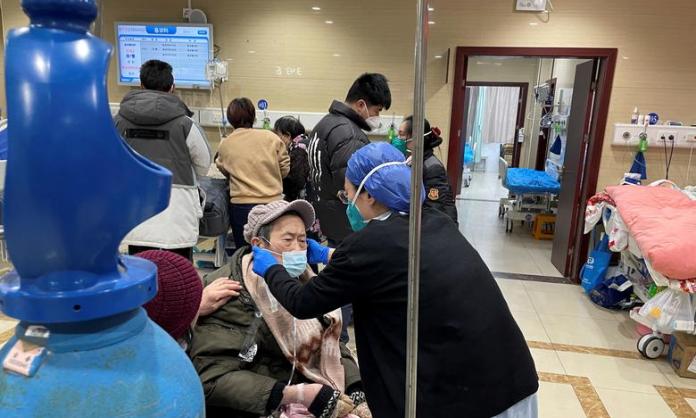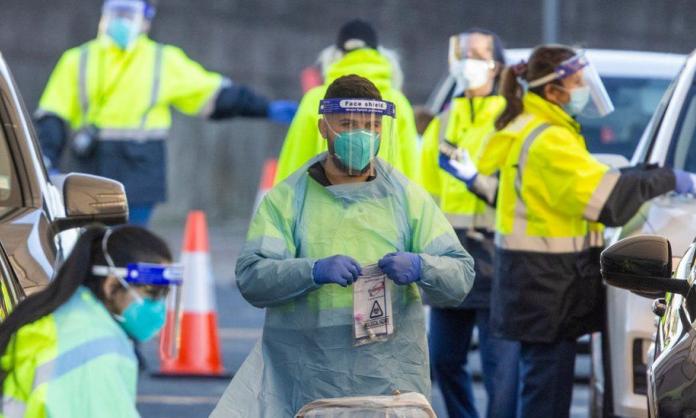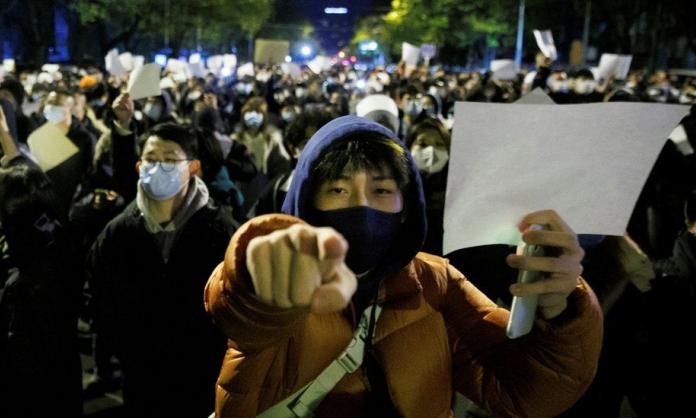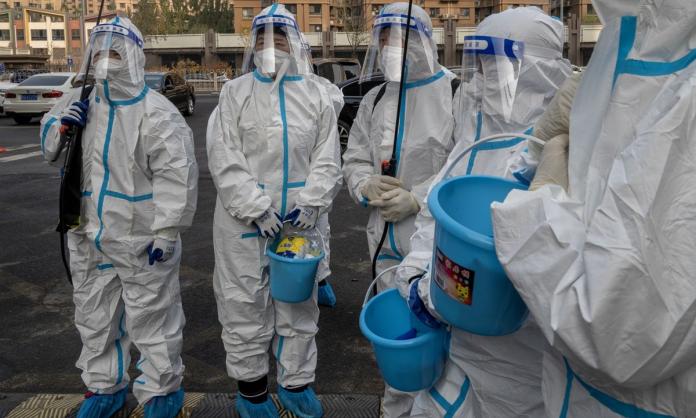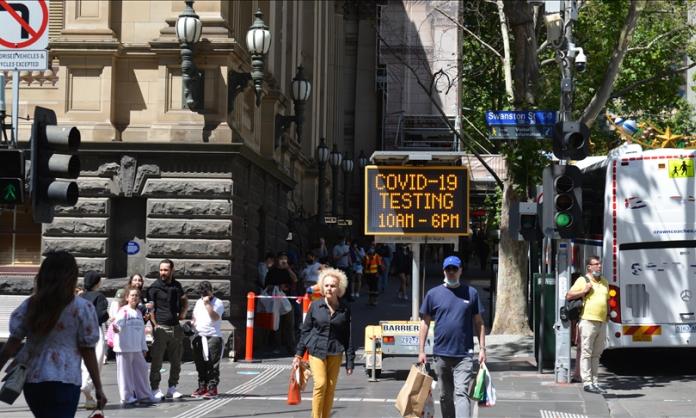“Aussie ingenuity will guide us through this difficult time.”
– Federal industry minister Karen Andrews, 17 March
“Masks are such a precious commodity in my hospital that they are being stored in the same locked cupboard as the morphine.”
– Public hospital doctor, writing in Red Flag, 17 March
“These are really desperate times ... We’re terrified to be honest. It’s as if we are being sent to war with no gun.”
– Sydney anaesthetists quoted by ABC News, 30 March
“One support worker ... resorted to making her own makeshift masks using paper towel, rubber bands and staples.”
– ABC News, 31 March
“I’ve seen department directors going to Bunnings ... it’s probably the number one concern for health workers around the country at the moment.”
– Emergency doctor Stephen Parnis on the ABC’s Q&A, 6 April
“A number of Aboriginal health groups in Victoria have been forced to cease COVID-19 testing and consider shutting their doors due to a lack of personal protective equipment.”
– The Guardian, 7 April
“157 healthcare workers from at least seven different Victorian hospitals and one radiology clinic have tested positive to COVID-19 so far.”
– Sydney Morning Herald, 10 April
--------------------
The lack of personal protective equipment (PPE) for health workers is a scandal in plain sight.
Reports from Singapore indicate that not a single health care worker there has been infected by coronavirus at their work. By contrast, in Italy 9 percent of all people infected are health workers and more than 100 are dead. In Spain, it’s even worse: at least 12 percent of those infected are health workers, with an unknown number of them dead.
The difference between countries such as Singapore and Germany, and countries like Spain, Italy and the United States, lies in rapid and effective public health measures, and the availability of PPE for health workers. Even at this early stage, the signs are not good in Australia. Victoria’s chief health officer said on 2 April that more than 100 health workers in the state had tested positive. By 10 April, the number had almost doubled. Not all cases have been contracted at work, but some have.
On 5 April, Melbourne disability nurse Sumith Premachandra, a 55-year-old father of two, died in isolation at Dandenong Hospital after being infected with COVID-19. He was the first health worker in Australia to die from the disease. There is no public information about how he was infected. But his death highlights the plight of health workers all over the country with inadequate PPE – worried about catching the virus from their work, and terrified about possibly passing the virus on to patients or clients or family members.
The current crisis of PPE has been a long time in the making. Both the Liberal Party and the ALP, when in office, have presided over a “lean production” model for the health industry – one in which there is no spare capacity in the system. Australia had 8.1 hospital beds per thousand people in 1977. Today we have less than four. Governments haven’t spent what would be needed to keep large equipment and PPE stockpiles. There’s also a more immediate problem. Despite having months to prepare for this crisis, governments have not done so. Media reports have documented this:
A high-tech manufacturer that previously built Holden Special Vehicles has offered to repurpose its 3D printers to start producing ventilators ... “(We) have actually put our hand up to make medical supplies, and primarily ventilators, for Australia”, Mr Walkinshaw said. “We have messaged various government contacts to explore this. Awaiting further response. The time to act is now, though, not in four weeks.”
– Sydney Morning Herald, 23 March
Melbourne jeans manufacturer NoBody Denim ... is ready to stop making jeans and start producing desperately needed medical protective equipment to help fight COVID-19 ... But the clock is ticking, and the government is yet to respond with a clear “yes” or “no” ... “Within days we’re going to be shutting and standing down employees. It would be a crying shame if there are medical staff out there who were in need of personal protective equipment and we could make it” ... Industrial clothing manufacturing business, Tuffa Workwear, is in a similar boat to NoBody Denim ... “The government hasn’t put out any real detail or specifications or quantities for what they actually need. All they’ve asked for is our business capability. If the government needs industry to step up and produce, they need to move quickly”.
– Australian Financial Review, 27 March
“This has all occurred over the last two weeks.”
– Adelaide Advertiser, 31 March
The paper was quoting Rodney Detmold, chairman of Adelaide food packaging manufacturer Detmold, which is retooling to make surgical masks from May. If this shift was organised over “the last two weeks”, what were governments doing for the previous two months?
New South Wales premier Gladys Berejiklian made a public appeal to manufacturers on 1 April to turn production towards medical supplies. This has to be seen as an acknowledgement, despite all the government blather about “Aussie ingenuity”, that governments have been criminally slow on producing and sourcing more PPE.
There’s also almost no transparency about the available stock of PPE. Federal health minister Greg Hunt announced on 5 April that 30 million masks had just arrived in Australia (though with zero clarity about whether these are standard surgical masks, the more effective N95 masks, or something else). So why do front line workers have to manufacture their own, reuse what they’ve been given, or do without?
Far too many workers have already been put in awful situations. Every worker should insist – in writing, in practice, with their union and, if possible, in public – on the PPE needed to do their job safely.
On 7 April, Scott Morrison announced that the rate of infection in Australia had fallen “well beyond our expectations”. This is, at least in part, because of the impressive movement from below which shut schools in many states in late March, against the resistance of Morrison and state premiers. And hopefully it will mean that we will avoid the horrific scenes coming in from the United States, where health workers are using plastic bags instead of gloves, garbage bags instead of smocks, disposable nappies instead of masks. Government negligence has already exposed health workers to unnecessary risks here. If a US-style disaster is avoided in Australia, it will be no thanks to the governments that spent months doing nothing.
This negligence doesn’t come out of nowhere. A well-prepared public health system is a necessity of life in any decent society. But for the elite that runs our society, it’s seen as a high fixed cost – an unwelcome expenditure in a system that ultimately runs for profit. So they reduce costs to the point of danger and beyond, including by failing to stockpile for emergencies.
They want us to believe that the market, or platitudes about “Aussie ingenuity”, will suffice. It’s bullshit. Their neglect will cost lives. No one is coming to save us except ourselves.







